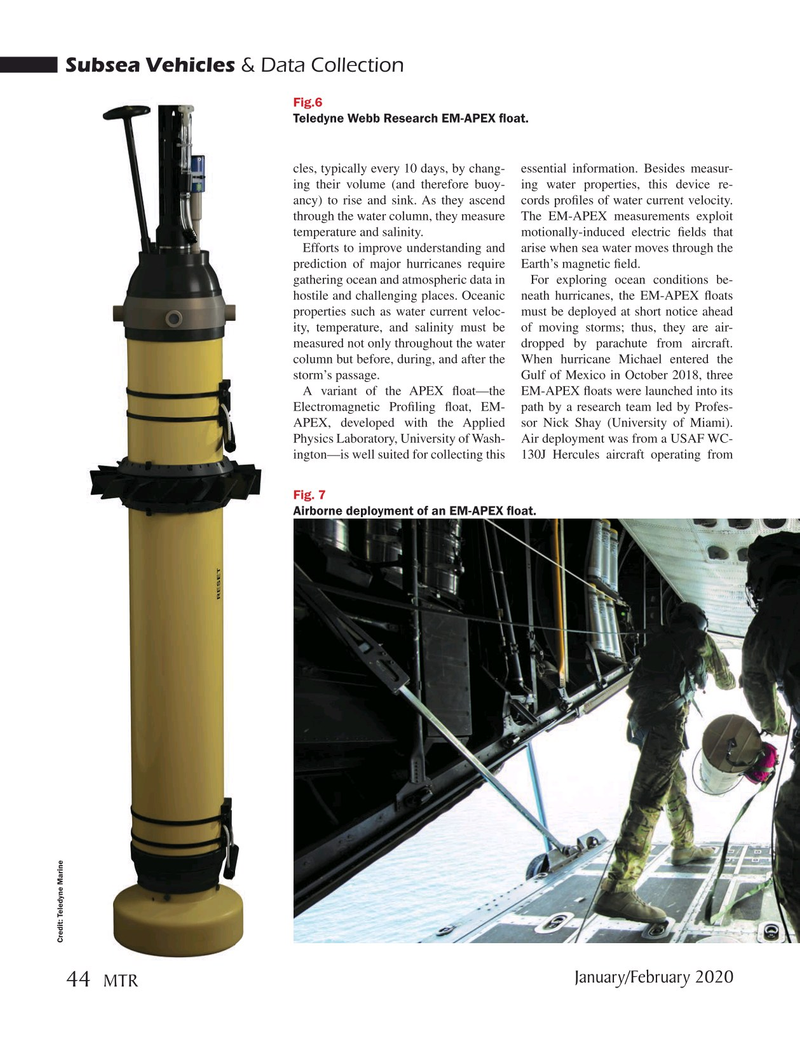
Page 44: of Marine Technology Magazine (January 2020)
Read this page in Pdf, Flash or Html5 edition of January 2020 Marine Technology Magazine
Subsea Vehicles & Data Collection
Fig.6
Teledyne Webb Research EM-APEX ? oat.
cles, typically every 10 days, by chang- essential information. Besides measur- ing their volume (and therefore buoy- ing water properties, this device re- ancy) to rise and sink. As they ascend cords pro? les of water current velocity. through the water column, they measure The EM-APEX measurements exploit temperature and salinity. motionally-induced electric ? elds that
Efforts to improve understanding and arise when sea water moves through the prediction of major hurricanes require Earth’s magnetic ? eld. gathering ocean and atmospheric data in For exploring ocean conditions be- hostile and challenging places. Oceanic neath hurricanes, the EM-APEX ? oats properties such as water current veloc- must be deployed at short notice ahead ity, temperature, and salinity must be of moving storms; thus, they are air- measured not only throughout the water dropped by parachute from aircraft. column but before, during, and after the When hurricane Michael entered the storm’s passage. Gulf of Mexico in October 2018, three
A variant of the APEX ? oat—the EM-APEX ? oats were launched into its
Electromagnetic Pro? ling ? oat, EM- path by a research team led by Profes-
APEX, developed with the Applied sor Nick Shay (University of Miami).
Physics Laboratory, University of Wash- Air deployment was from a USAF WC- ington—is well suited for collecting this 130J Hercules aircraft operating from
Fig. 7
Airborne deployment of an EM-APEX ? oat.
Credit: Teledyne Marine
January/February 2020 44
MTR
MTR #1 (34-49).indd 44 1/17/2020 1:31:39 PM

 43
43

 45
45
